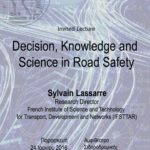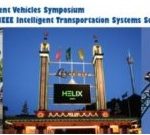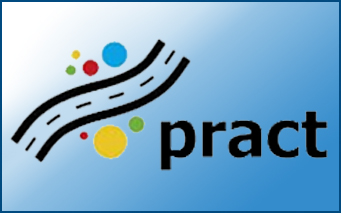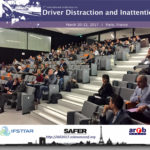
The 5th International Conference on Driver Distraction and Inattention organised by IFSTTAR, ARRB Group and SAFER took place with great success (20-22 March 2017), in Paris. Presentations concern new forms of mobility (e.g. autonomous vehicles, electric vehicles, soft modes of transport, etc.), other road user groups (e.g. motorcyclists, bicyclists, pedestrians, etc.), new modes of HMI interaction (e.g. voice recognition, I-watches, gesturing, etc.), new sources of distraction from outside the vehicle (e.g. advertising on moving trucks, bus shelters, mobile trailers, etc.), and sources of distraction in domains other than transport (e.g. aviation, medicine, process control, etc.). ![]() The e-proceedings of DDI17 are now available:
The e-proceedings of DDI17 are now available: ![]() NTUA contributed with two presentations concerning:
NTUA contributed with two presentations concerning:
![]()
![]() The detrimental effect of mobile phone use on the driving competence of patients with neurological diseases affecting cognitive functions
The detrimental effect of mobile phone use on the driving competence of patients with neurological diseases affecting cognitive functions
![]()
![]() How does distracted driving affect lateral position of older drivers?
How does distracted driving affect lateral position of older drivers?

The Transportation Research Board (TRB) 96th Annual Meeting was held with great success in Washington, D.C., on 8-12 January 2017. The information-packed program attracted a record number of more than 14,000 transportation professionals from around the world. The meeting program covered all transportation modes, with more than 5,800 presentations in nearly 800 sessions and workshops, addressing topics of interest to policy makers, administrators, practitioners, researchers, and representatives of government, industry, and academic institutions. The 800 sessions and workshops focused on the spotlight theme for the 2017 meeting: Transportation Innovation: Leading the Way in an Era of Rapid Change. ![]()
![]()
![]()
NTUA presentations concerned:
![]()
![]() Stochastic cusp catastrophe models with traffic and weather data for crash severity analysis on urban arterials
Stochastic cusp catastrophe models with traffic and weather data for crash severity analysis on urban arterials
![]()
![]() Willingness-to-Pay for Usage-Based Motor Insurance
Willingness-to-Pay for Usage-Based Motor Insurance
![]()
![]() Can driving at the simulator “diagnose” cognitive impairments?
Can driving at the simulator “diagnose” cognitive impairments?
![]()
![]() When no difference makes a difference: older drivers, medical conditions, and freeway ramp negotiation
When no difference makes a difference: older drivers, medical conditions, and freeway ramp negotiation
![]() SaferAfrica: Innovating Dialogue and Problems Appraisal for a Safer Africa
SaferAfrica: Innovating Dialogue and Problems Appraisal for a Safer Africa
![]() Developing the European Road Safety Support System within the SafetyCube project
Developing the European Road Safety Support System within the SafetyCube project
![]() Roadside and Median Deficiencies within the SafetyCube Road Safety Decision Support System
Roadside and Median Deficiencies within the SafetyCube Road Safety Decision Support System
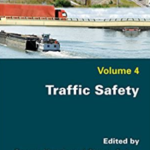
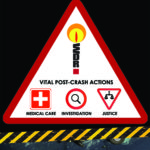
The World Day of Remembrance for Road Traffic Victims is observed on the third Sunday of November each year (this year on 20 November 2016) by an increasing number of countries on every continent around the world. From 1995, the European Federation of Road Traffic Victims (FEVR) observed this day, as European Day of Remembrance, that was adopted by the United Nations in 2005, and is dedicated to remembering the many millions killed or injured in road crashes and their families and communities, as well as to pay tribute to the dedicated emergency crews, police and medical professionals who daily deal with the traumatic aftermath of road death and injury. ![]()
![]()
Several activities took place worldwide, including those of:
- the European Commission support
 and special statements by Commissioners Bulc and Andriukaitis
and special statements by Commissioners Bulc and Andriukaitis 
- the World Health Organization (WHO) supported this World Day of remembrance
 and produced a booklet on Post-crash response: supporting those affected by road crashes
and produced a booklet on Post-crash response: supporting those affected by road crashes 
- the European Transport Safety Council (ETSC) on the occasion of this World Day of Remembrance launched the new REVIVE initiative focusing on post-collision care

Several activities took also place in Greece:
- EFTHITA Rhodes organised a seminar on parents driver behaviour and was also received by the President of the Republic who expressed all his support

- SOS Traffic Crimes organised traffic safety promotion events in central places in Athens, Kalamata, Katerini and Alexandroupolis

- Road Safety Institute “Panos Mylonas” organised prevention and educational road safety actions in cooperation with Technological Educational Institution (TEI) of Athens and other Greek Institutions

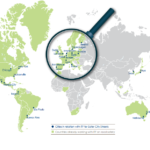
Safer City Streets, the new global traffic safety network for liveable cities, was launched on 18 October during the UN Habitat III conference in Quito, Ecuador. Safer City Streets is managed by the International Transport Forum and it is built for cities to share their experience and learn from each other. Cities address many challenges by working together and learning from each other – but so far not in road safety. Safer City Streets fills this gap by linking cities that are working to make their citizens safer in traffic. It provides city officials high-value information for better decision making, global networking and learning opportunities for city officials and the possibility to carry out research on topics of common interest. Member cities have access to policy-relevant data, a network of experts and targeted analysis. ![]()
![]()
NTUA has actively contributed to the Methodology for Developing the Database and Network. ![]()

NTUA presentations concerned:
![]()
![]() Development of an online Repository of Accident Prediction Models and Crash Modification Factors
Development of an online Repository of Accident Prediction Models and Crash Modification Factors
![]()
![]() An in-depth analysis of road infrastructure interventions aiming to improve road safety of the elderly in Europe
An in-depth analysis of road infrastructure interventions aiming to improve road safety of the elderly in Europe
![]()
![]() Development of a road safety DSS for road infrastructure
Development of a road safety DSS for road infrastructure
![]()
![]() Road traffic accidents in European urban areas
Road traffic accidents in European urban areas
![]()
![]() Comparative analysis of road accidents in the European motorways
Comparative analysis of road accidents in the European motorways

The European Transport Safety Council (ETSC) held the 6th Annual European PRAISE Conference on work-related road safety in Brussels on 19 October. Using the roads is a necessary part of our working lives but it’s an ordinary activity that leads to an incredibly high level of injury and death. The conference brought together fleet safety managers, EU institutions, government representatives and road safety experts to discuss the latest developments and priorities in work related road safety. The winners of the ETSC PRAISE awards 2016 were also announced. The program included contributions from leading occupational health and safety experts and featured presentations of ETSC’s new reports: ‘Managing Grey Fleet Safety’ and ‘Making Taxis Safer’. ![]()
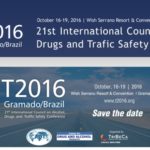
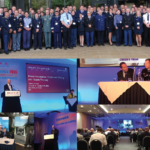
The 2016 TISPOL Conference organised by the European Traffic Police Network took place with great success on 4-5 October, in Manchester. There was an interesting and varied line-up of speakers from police, policymaking and industry across Europe coverning a wide range of traffic enforcement and road safety topics. The 200+ people involved with TISPOL International Road Safety Conference made it an exceptionally useful and worthwhile event. Two days of compelling and engaging content were delivered without exception by passionate and enthusiastic people, all with something worthwhile to add to the theme of innovation and success. ![]()
![]()
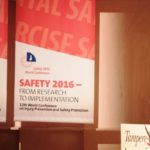
The 12th International Conference on Injury Prevention and Safety Promotion, Safety 2016, took place with great success in Tampere, Finland, on 18-21 September, 2016. It was an initiative of the World Health Organisation (WHO) and its network of WHO-Collaborating Centres for injury prevention, attended by more than 1.100 participants from more than 120 countries. The conference programme consisted of 1.004 presentations and traffic safety was one of the major conference topics. ![]()
NTUA presentations concerned:
![]() Characteristics of road accidents with youngsters in Europe
Characteristics of road accidents with youngsters in Europe
![]() Comparative analysis of road accidents by gender in Europe
Comparative analysis of road accidents by gender in Europe
![]() Exploration of accident probability of drivers with brain pathologies
Exploration of accident probability of drivers with brain pathologies
![]() Developing the European Road Safety Decision Support System
Developing the European Road Safety Decision Support System
![]() Exploring the difference of traffic parameters by severity level and accident type in urban areas
Exploring the difference of traffic parameters by severity level and accident type in urban areas
![]() Correlation of road safety performance with social and economic indicators in the EU
Correlation of road safety performance with social and economic indicators in the EU
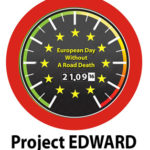
The European Traffic Police Network (TISPOL) together with the European Commission DG Move Road Safety Unit have launched the project EDWARD – the European Day Without A Road Death 2016, which took place with great success on 21 September 2016. This day there were 43 road deaths across 31 countries, compared to 70 fatalities on the same day in 2015 (reduction of almost 39%) with 19 countries recording zero fatalities on 21 September, compared with 11 countries in 2015. A full country-by-country result report is now available: ![]()
Project EDWARD also featured a road safety pledge asking road users to promise to: drive at speeds that are both legal and safe, pay particular attention when driving near schools, never drive after drinking alcohol or taking drugs/medicines, always wear seat belt and not using mobile phone while driving. ![]()

The 15th International Alcohol Interlock Symposium organised by the Traffic Injury Research Foundation (TIRF) and the European Transport Safety Council (ETSC), took place with great success on 13-15 September, in Brussels. Alcohol interlock programs have expanded greatly in recent decades. Today, programs combine technological advances with more tailored and efficient monitoring strategies to deliver high-quality services. The theme of the 2016 Symposium is “Efficiency Through Automation”. As alcohol interlock technology evolves, it becomes increasingly important to understand how intelligent devices can be embedded in sophisticated vehicles and linked to database systems to make services more accessible and enhance road safety. ![]()
Please use the following link to download the presentations:![]()
NTUA presentation concerned: Alcohol Interlocks & Building Capacity for Automated Solutions ![]()

Dimosthenis Pavlou has successfully defended his PhD dissertation titled: Traffic and safety behaviour of drivers with neurological diseases affecting cognitive functions. This PhD thesis was carried out at the Department of Transportation Planning and Engineering at the School of Civil Engineering of the National Technical University of Athens under the supervision of Prof. George Yannis. The impact of brain pathologies on reaction time, accident probability, driving errors, and driving performance was under investigation. The driving behaviour was examined in terms of both traffic and safety behaviour and the neurological diseases affecting cognitive functions concerned Alzheimer’s disease (AD), Parkinson’s disease (PD), and Mild Cognitive Impairment (MCI). A large-scale driving simulator experiment was carried out, comprising a medical/neurological and neuropsychological assessment of 225 drivers, and a set of driving tasks for different scenarios. An innovative statistical analysis methodology has been developed and implemented, based on Regression Models, Principal Component Analysis and Structural Equation Models. ![]()
![]()
![]()
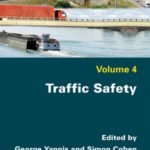
Selected papers of the Transport Research Arena Conference which took place in Paris in 2014 are now published by ISTE/Wiley. A special volume co-edited by NTUA Prof. George Yannis, and ENPC Prof. Simon Cohen is dedicated to Traffic Safety, containing theoretical chapters and practical case studies addressing topics such as road safety management and policies, accident analysis and modeling, vulnerable road users’ safety, road infrastructure safety, ITS and railway safety. ![]()




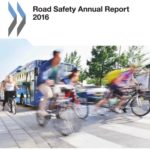

The World Conference on Transport Research (WCTR) organised by the WCTRS and the Tongji University took place on 10-15 of July 2016, at Shanghai, China. The programme included more than 1.170 papers presented in oral and poster sessions. The authors from 65 countries ensured WCTR 2016 as a truly international event. The aims of the WCTR Conference were to offer a unique opportunity to bring together experts in all aspects of transport research, from all parts of the world and to stimulate the exchange of ideas in the broad field of transport research. ![]()
The Conference Key Findings are now available. ![]()
NTUA presentations concerned:
![]()
![]() Human factors of pedestrian walking and crossing behaviour
Human factors of pedestrian walking and crossing behaviour
![]()
![]() Road safety data and priorities in South-East European regions
Road safety data and priorities in South-East European regions
![]()
![]() Review of driving performance parameters critical for distracted driving
Review of driving performance parameters critical for distracted driving
![]()
![]() Assessing the driving performance of drivers with cerebral diseases
Assessing the driving performance of drivers with cerebral diseases
![]()
![]() Investigation of road accident severity per vehicle type
Investigation of road accident severity per vehicle type
![]()
![]() Texting on Young Drivers Behavior by Means of Multivariate Copulae Analysis
Texting on Young Drivers Behavior by Means of Multivariate Copulae Analysis

A Diploma Thesis titled ‘Investigation of declared and revealed driver behaviour using vehicle diagnostics’ was presented by Natalia Vittoratou in July 2016, with the support and data from OSeven Telematics. The aim of this diploma thesis is the correlation of stated and revealed driver’s behavior with the use of vehicle on-board diagnostics (OBD) data. On that purpose, a large data set from a driving behavior experiment was exploited, which recorded continuously (per second during a period of three months) the behaviour of 17 drivers. These data concerned harsh acceleration and braking, average traffic speed and mileage travelled. Drivers’ stated behaviour was investigated through a corresponding questionnaire. For the data analysis, a mathematical statistical model was developed using linear regression. The results demonstrated a strong correlation between harsh brakings and accelerations on one hand and the number of accidents, the annual income and the declared frequency of harsh braking on the other. ![]()
![]()


A Diploma Thesis titled “Correlation of driver characteristics and its safety performance” was presented by Vasiliki Agathangelou in July 2016, with the support and data from OSeven Telematics. Data from an experiment on driver behaviour assessment from an expert was exploited, using on-road driving in conjunction with a self-evaluation questionnaire. The analysis of the drivers’ behaviour was carried out through factor and linear regression analyses. Three groups that characterise drivers’ perception of careless, aggressive and cautious driving behaviour were derived from factor analysis. Moreover, linear regression analysis revealed that driving experience, headways, self-reported driving skills and defensive driving affect positively the overall on-road driving performance score. It was ascertained that driving experience leads to statistically significant increase in overall on-road driving performance score. ![]()
![]()


The Benchmarking Albania towards EU Road Safety Conference organised by AVIS Albania and Trans Andriatic Pipeline (TAP) took place on 6 July 2016, in Tirana. The Conference provided a platform for private stakeholders, government officials and international entities operating in Albania to raise awareness regarding the importance of road safety. Discussions also focused on current road safety reality and challenges and, above all, promoting ideas for new initiatives and policies. ![]()
NTUA presentation concerned: Road Safety Investments and Interventions in South East Europe ![]()

The Annual Road Safety Conference of the Bar Ilan University, took place with great success in Tel-Aviv on 7 July 2016. More than 100 road safety experts and stakeholders have discussed on current developments and challenges on road safety worldwide, with emphassis on driver behaviour and respective road safety measures.
NTUA presentation concerned: Risk factors, driver behaviour and accident probability. The case of distracted driving. ![]()

A Road Safety Workshop was organised by the SafetyCube EC funded project, regarding the first viewing of the SafetyCube European Road Safety Decision Support System (DSS). It took place with great success at BRSI in Brussels, on 27 September 2016. The purpose of the workshop was to illustrate how existing road safety knowledge can be collected, structured and distilled into the SafetyCube DSS that can be queried in terms of safety risk factors and potential countermeasures, including crash scenarios. Key road safety stakeholders had the opportunity to watch the methodology followed and test the SafetyCube DSS prototype, allowing vivid discussion for its further improvement. ![]()
The NTUA presentations concerned
